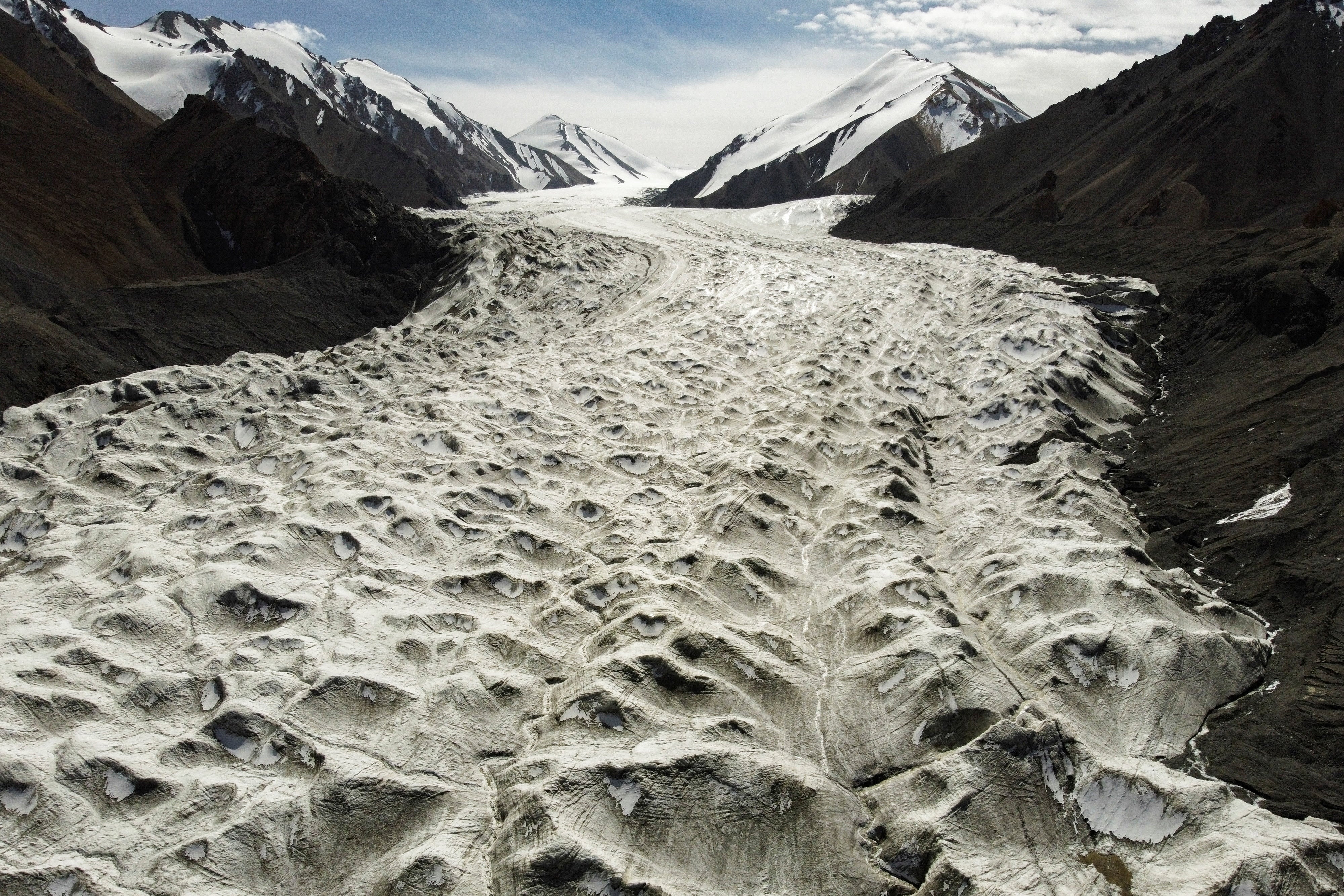Climate crisis: Remote glaciers in China melting at ‘shocking’ pace, risking water shortages
Scientists say largest glacier in world’s ‘third pole’ has retreated by 450 metres, as temperatures rise

Your support helps us to tell the story
From reproductive rights to climate change to Big Tech, The Independent is on the ground when the story is developing. Whether it's investigating the financials of Elon Musk's pro-Trump PAC or producing our latest documentary, 'The A Word', which shines a light on the American women fighting for reproductive rights, we know how important it is to parse out the facts from the messaging.
At such a critical moment in US history, we need reporters on the ground. Your donation allows us to keep sending journalists to speak to both sides of the story.
The Independent is trusted by Americans across the entire political spectrum. And unlike many other quality news outlets, we choose not to lock Americans out of our reporting and analysis with paywalls. We believe quality journalism should be available to everyone, paid for by those who can afford it.
Your support makes all the difference.Glaciers in China’s remote Qilian Mountains are melting at a “shocking” pace due to the climate crisis, and could result in crippling water shortages, scientists have warned.
The 500-mile long mountain range forms the border between Qinghai and the Gansu provinces of northern China, and has peaks over 5,000 metres high — taller than the Alps.
But rising temperatures have meant glaciers are now in retreat, and the process is getting faster.
The largest glacier in the mountains, on the arid northeastern edge of the Tibetan plateau, has retreated about 450 metres since the 1950s, when researchers set up China’s first monitoring station to study it.
The 20-square kilometre glacier, known as Laohugou No 12, is scored by the channels made by rivulets of water which run across its craggy, grit-blown surface.
It has shrunk by about 7 per cent since measurements began, with melting accelerating in recent years, scientists have said.
It has also lost considerable thickness, with about 13 metres (42 feet) of ice disappearing as temperatures have risen, Qin Xiang, the director at the monitoring station told Reuters.
“The speed that this glacier has been shrinking is really shocking,” Dr Qin said.
The Tibetan plateau is known as the world’s “Third Pole” due to the amount of ice locked in the high-altitude wilderness. The plateau contains the largest reserve of freshwater outside the polar regions.
But, since monitoring began in the 50s, average temperatures in the area have risen about 1.5C, Dr Qin said, and with no sign of an end to warming, the outlook is grim for the 2,684 glaciers in the Qilian range.
Across the mountains, glacier retreat was 50 per cent faster from 1990 to 2010 than it was from 1956 to 1990, data from the China Academy of Sciences shows.
Meanwhile, the flow of water in a stream near the terminus of the Laohugou No 12 runoff is about double what it was 60 years ago, Dr Qin said.
Further downstream, at what was once a major junction on the ancient Silk Road, water flowing from the mountains has formed a lake in the desert for the first time in 300 years, state media reported.
While temperatures have risen, other climate impacts have also changed the weather patterns in the mountains. Snowfall and rain has often been considerably less than in previous decades, so even though the melting glaciers are bringing more runoff from the mountains, farmers downstream face water shortages, which are already making themselves felt.
“Across the region, glacial melt water is pooling into lakes and causing devastating floods,” said Greenpeace East Asia climate and energy campaigner Liu Junyan.
“In spring, we’re seeing increased flooding, and then when water is needed most for irrigation later in the summer, we’re seeing shortages.”
China Academy of Sciences expert, Shen Yongping, warned the melting in the mountains could peak within a decade, after which snow melt would sharply decrease due to the smaller, fewer glaciers, which would worsen the water crises.
Additional reporting by Reuters.




Join our commenting forum
Join thought-provoking conversations, follow other Independent readers and see their replies
Comments